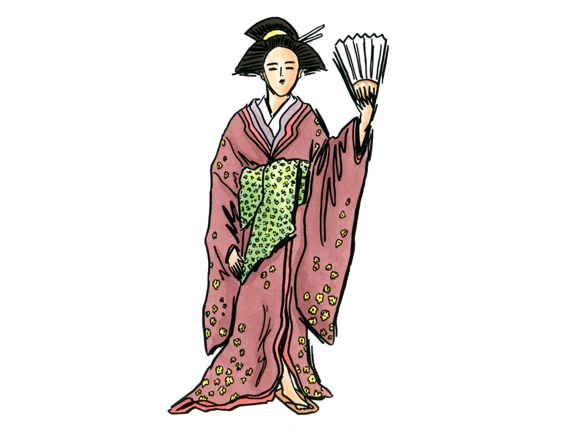Japanese Clothing Wikipedia. Japanese Fashion Line Releases New Samurai Wardrobe And It S.
What did medieval Japanese people wear.
. The peasants merchants and artisans wore rough kimonos made out of cotton. People in feudal Japan wore kimonos. In Medieval Japan men and woman would wear kimonos.
Up to 24 cash back wearing a haori. Would most likely wear them for. The more layers the wealthier the woman was and the better it looked to her.
The extravagant and richly embroidered costumes of the actors would greatly influence late medieval and early modern fashion in Japan. Shorter haori but for formal occasions you would wear a longer one. Women S Wear In Feudal Japan The Muromachi And Edo Eras Ppt.
Fashion Beauty Life In Heian Japan And Medieval Europe. Feudal Japanese Fashion Google Search Chinese. The under-tunic of the women was called a chemise which was made of linen and over it a long ankle-reaching tunic was worn.
The samurai wore woodblock pattern on their armor and their daily clothing. The peasants merchants and artisans wore rough kimonos made out of cotton. The earliest representations of dress styles in Japan are to be found in 3rd- to 5th-century ce clay grave figures a few of which show men and women wearing meticulously detailed two-piece costumes consisting of crossed-front jackets that flare out over the hips the mens worn over full trousers which banded above the knees hang straight and loose beneath.
They consist of long sleeves and go from shoulders to the heels. Kimonos came during the Hein period 794CE - 1185CE. Feudal Japanese Fashion Google Search Japanese Fashion.
The kimonos for women included an obi which was a giant sash that they wrapped around their waist and was elaborately tied in the back. In fact many different types of people helped shape the medieval period. Women in Japan wanted extremely long black hair that could almost go down to her feet sometimes.
Times of Feudal Japan. Long hair was considered beautiful. Medieval Europe Feudal Japan Fashion Medieval Europe Feudal Japan Similarities Queens and Kings Emperor Shogun Daimyo Fashion style represented their class in the society Clothing depended on how wealthy they were Warriors wore protective battle wear instead of nice clothes.
Throughout much of the Middle Ages and in most societies the undergarments worn by both men and women didnt substantially change. The upper class would wear elaborate kimonos made of silk. Garments Worn Under Medieval Clothing.
Another development was the Japanese Tea Ceremony chanoyu which gained a much wider appeal thanks to the combined efforts of the monk Murato Shuko 1422-1502 CE and the shogun Ashikaga Yoshimasa r. In Heian Japan women dyed their teeth black while women didnt dye their teeth black or any shade in Medieval Europe. The various traditional ethnic garments worn in Japan are still in use they are mainly worn for ceremonies and special occasions- like weddings funerals coming-of-age ceremonies seijin shiki and festivals.
LIFE IN MEDIEVAL JAPAN Japanese Clothing and Fashion In modern Japan there is western clothing yofuku and Japanese clothing wafuku. Almost everyone in feudal Japan wore a kimono. Fashion Medieval Japan.
Fashion Costumes of Medieval Japan - Free download as Powerpoint Presentation ppt PDF File pdf Text File txt or view presentation slides online. These figures often seen in popular movies and games about pre-modern Japan are only loosely based on reality. A haori is a long and thin coat which was worn by men back in.
Women wore long tunics or gowns in this medieval period. Almost everyone in feudal Japan wore a kimono. Medieval Japan may call to mind honorable sword-wielding samurai and stealthy ninja assassins.
For staying at home you would usually wear a. The length of the haoris can change for the occasion you. Basically they consisted of a shirt or under-tunic stockings or hose and some kind of underpants or breeches for men.
A close fit to the body full skirts and long flaring sleeves that were characteristic of upper class fashion for both men and women. Short History Of Japanese Textiles Silk may be the best known Japanese textile because of its stunning beauty and value for fashioning luxurious kimonos but in pre-industrial Japan only the nobility and upper classes were permitted to wear silk clothing.

Japanese Fashion Through The Eras From Heian To Heisei Tokyo Weekender
Medieval Japanese Clothing Medieval Japan

Women S Wear In Feudal Japan The Muromachi And Edo Eras Ppt Download

Haori And Hakama Japanese Traditional Clothing Items Matcha Japan Travel Web Magazine

0 comments
Post a Comment